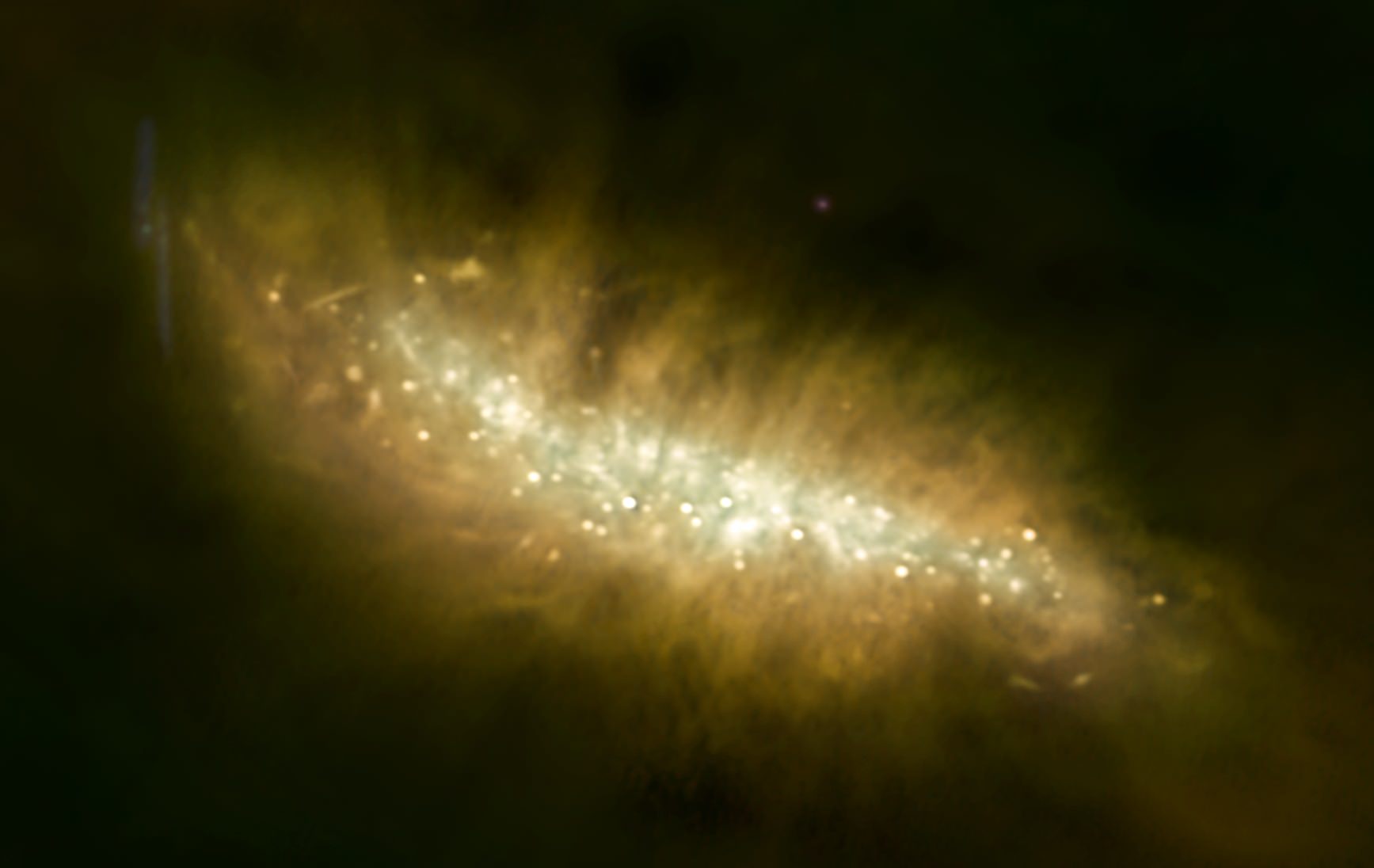Radio light, radio bright: when you look at M82 in this frequency range, a whole lot of activity pops out. The “Cigar Galaxy” is just 12 million light-years away from Earth and these days, is best known for hosting a supernova or star explosion so bright that amateurs can spot it in a small telescope.
Take a big radio telescope and peer at the galaxy’s center, and a violent picture emerges. Bright star nurseries and supernova leftovers are visible in this image from the Karl G. Jansky Very Large Array (the scientists can tell those apart using other data from the telescope.)
“The radio emission seen here is produced by ionized gas and by fast-moving electrons interacting with the interstellar magnetic field,” the National Radio Astronomy Observatory stated.
Most intriguing to scientists in this picture are the streamers of material in this area of M82, which is about 5,200 light-years across in the pictured central region. These previously undetected “wispy features” could be related to “superwind” coming from all this stellar activity, but scientists are still examining the link.
By the way, Supernova SN 2014J is not visible in this image because it is not active in radio waves. You can check out optical pictures of it, however, at this past Universe Today story.


I like the seemingly inexplicable straight lined streaks in the upper left. Colliding spirals seen edge on? FTL starship trails? (Imagine the energy required)
“…Supernova SN 2014J is not visible in this image because it is not active in radio waves.”
According to the NRAO press release, SN 2014J is located outside and to the right of this radio image of the core of M82 (see the press release outlining the location of this radio image wrt an optical image of the galaxy). It does mention that the supernova has not yet been detected with the VLA, as is typical in the early phases of a Type Ia supernova.
The filamentary streamers in the image are indeed intriguing and resemble similar features seen in our own galaxy, only not as profuse as in M 82.